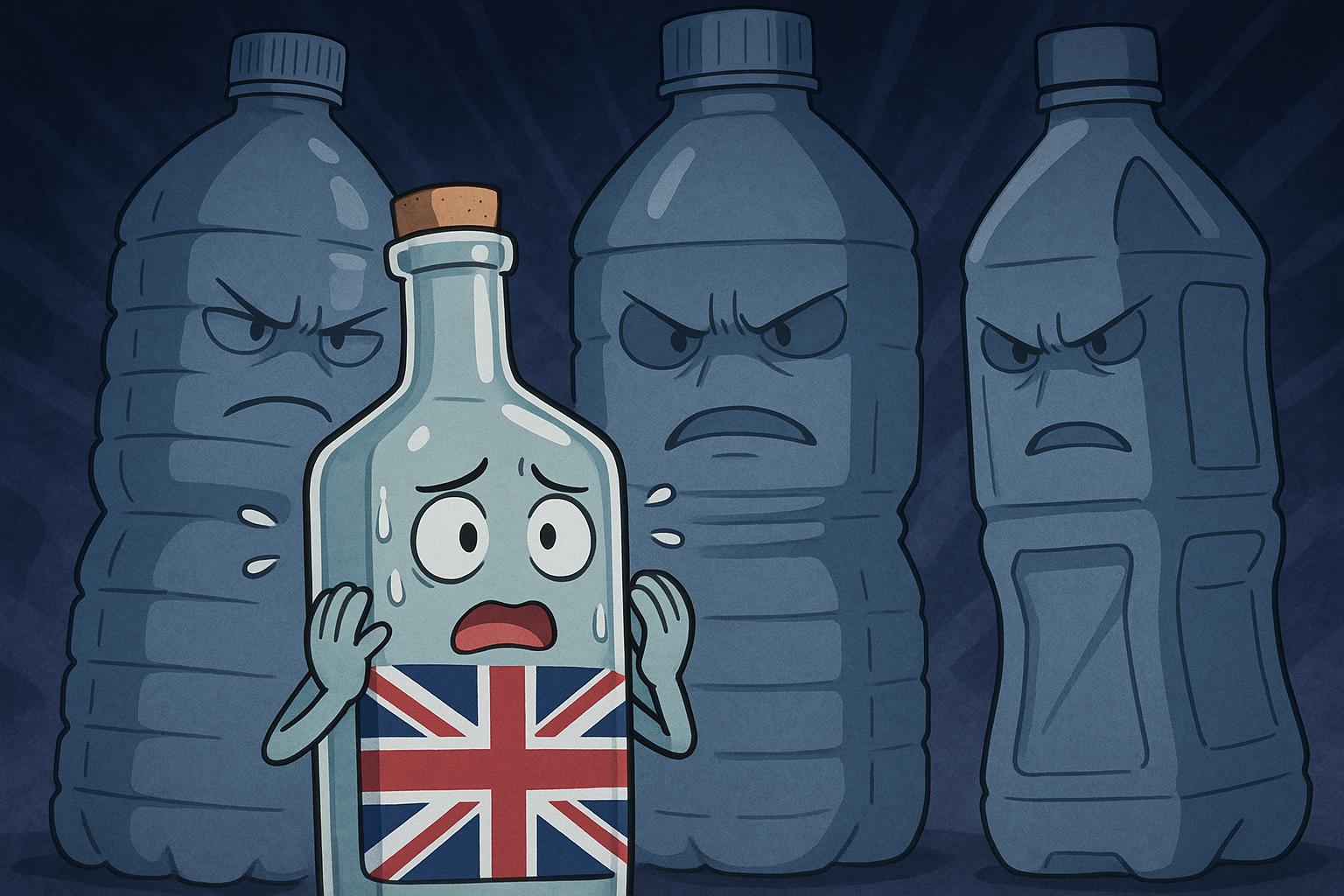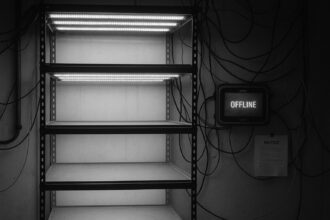British Glass has criticised planned UK Extended Producer Responsibility reforms for imposing disproportionately high costs on glass packaging, risking a shift to plastics and jeopardising domestic manufacturing jobs and environmental goals.
British Glass has raised significant concerns regarding the UK Government’s proposed reforms to the Extended Producer Responsibility (pEPR) scheme, which poses a substantial risk to the domestic glass packaging industry. In a recent survey, 43% of UK brands and retailers indicated they are considering moving away from glass packaging, with a striking 77% of those likely to switch to plastic alternatives. The findings reflect a growing unease about the financial implications of these reforms, which are set to impose disproportionately high costs on heavier recyclable materials like glass.
The pEPR reforms, spearheaded by the Department for Environment, Food and Rural Affairs (DEFRA), aim to make producers fully responsible for managing packaging waste. However, British Glass argues that the current fee structure is fundamentally flawed, as it bases costs on weight rather than volume. This methodology not only disadvantages glass—a fully recyclable material—but also drives brands towards lighter packaging options that are less sustainable. Nick Kirk, Technical Director at British Glass, has warned that glass packaging could bear nearly a third of the estimated £1.5 billion pEPR cost, despite comprising only about 5% of packaging waste by volume. This shift could result in a decline in UK-made glass and an increase in imports, jeopardising local manufacturing jobs and threatening the sector’s future.
Detailed findings from the British Glass survey illustrate the potential pitfalls of the pEPR scheme. In addition to the 43% considering a move away from glass, 38% of brands and retailers expect to pass on over 95% of the pEPR fees to consumers. Two-thirds are contemplating importing glass, drawn by lower costs that can better absorb these fees. Only 23% are actively exploring reusable packaging solutions, emphasising the need for immediate adjustments to the pEPR framework.
Critics, including Dave Dalton, Chief Executive of British Glass, assert that the government is proceeding without adequately considering the concerns of the industry. With estimates suggesting that costs for products in glass containers could rise by more than 10p, this could have detrimental effects on consumer prices and job security in a sector employing approximately 120,000 people throughout its supply chain. Dalton has emphasised the potential for increased plastic usage as brands seek to evade higher glass fees, undermining environmental objectives by promoting materials that are not as recyclable as glass.
Although DEFRA has acknowledged the need for reassessment of the fees, with plans to consider packaging volume in its revised methodology, there remain concerns that these changes will not sufficiently alleviate the competitive disadvantage glass faces. The government has also admitted, in its own Impact Assessment, that materials incurring higher fees are likely to see a drop in demand, indicating the broader implications of its planned policies.
British Glass contends that, while reuse initiatives are a commendable long-term goal, they are not a practical solution in the short term due to high initial costs and inadequate infrastructure. DEFRA itself has stated that widespread reuse is at least a decade away. This raises pressing questions about the viability of glass as a sustainable packaging option under the current pEPR policies.
The organisation is advocating for a revision of the fee structure, a delay in implementing these fees until the Deposit Return Scheme (DRS) is functional, and a cooperative effort with industry stakeholders to establish realistic long-term solutions for reuse. Without these adjustments, the pEPR is likely to lead to higher consumer costs without achieving the intended environmental benefits, as up to 85% of the additional costs could be passed on to consumers.
As the glass industry anticipates the 2025 implementation of these reforms, the urgency of deliberations with the government has never been greater. British Glass’s concerns highlight the need for a balanced approach that considers the economic implications for manufacturers and the environmental impacts of shifting towards less sustainable packaging options.
 Reference Map:
Reference Map:
Source: Noah Wire Services
- https://www.glass-international.com/news/uk-glass-packaging-at-risk – Please view link – unable to able to access data
- https://www.packagingnews.co.uk/news/environment/legislation/british-glass-lambasts-government-for-extended-producer-responsibility-impact-on-glass-03-12-2024 – British Glass has criticised the UK Government for passing new packaging legislation that shifts the cost of collection and sorting from local authorities to producers. The new packaging extended producer responsibility (pEPR) scheme imposes higher levies on heavier containers like glass, potentially increasing costs for products in glass bottles and jars by more than 10p, while products in plastic or metal containers will only have a marginal cost. Glass fees for beverage packaging are expected to be around 49 times higher than other, less recyclable materials, leading brands to consider moving away from using 100% recyclable glass products. This move could result in job losses in a sector employing 120,000 people in its supply chain. Dave Dalton, chief executive of British Glass, stated that the Government has failed to listen to concerns from producers and trade bodies, and is proceeding with an ill-thought-out scheme that is detrimental to the glass sector and British manufacturing. British Glass supports the principle of pEPR and the need for packaging waste collection and recycling reforms to deliver a circular economy for the UK, but believes this scheme will have a profound impact on competitiveness against other packaging formats, leading to job losses predominantly in the UK’s manufacturing heartlands. Prices are expected to increase for consumers and SMEs who are already operating on wafer-thin margins. The effect on the environment is also concerning, as the pEPR policy may incentivise more plastic usage, which is less circular than glass. British Glass urges the Government to reconsider this policy and engage with businesses to create realistic, long-term reuse solutions.
- https://www.packagingnews.co.uk/news/environment/british-glass-welcomes-defras-commitment-to-reassess-epr-fees-16-09-2024 – British Glass and key stakeholders have met with the Department for Environment, Food and Rural Affairs (Defra), which has committed to reassessing Extended Producer Responsibility (EPR) fees, taking packaging volume into account in the revised methodology. Defra indicated that potential reforms to the Simpler Recycling policy are under consideration. The trade body was joined in the meeting by firms in the glass supply chain—including manufacturers, trade associations, drinks brands, and retailers—and aired their concerns on the potential impacts of the proposed EPR fees on glass packaging. British Glass said Defra will reassess the EPR fees structure, by taking packaging volume into account in the revised methodology, pledging to publish revised fees by the end of September; British Glass hopes this will result in a reduced glass EPR fee that is supportive of circular glass recycling and will not result in material switching. British Glass also raised concerns about the timeframes for implementing EPR and DRS, which will lead to glass beverage packaging paying EPR fees from 2025, but the competing materials (metal cans and plastic bottles) are exempt from EPR fees. It said this will lead to uncompetitive market conditions for nearly three years (Jan 2025 to October 2027) for glass beverage packaging, which it is convinced will lead to material switching and loss of market share for glass packaging. British Glass technical director Nick Kirk said: “EPR is designed to incentivise producers to design more sustainable circular packaging and reduce waste. However, if the system disproportionately penalises materials like glass, it risks driving producers towards less circular options that may be lighter but more environmentally harmful over their lifecycle, all in the name of reducing costs. We’re pleased that Defra has recognised this, and we look forward to receiving the revised EPR fees following a methodology revision later this month; without a change in the methodology used to calculate the fees, the fee change is likely to be modest.” Additionally, Defra is thought to have said potential reforms to the Simpler Recycling policy are under consideration. British Glass said these reforms should aim to ensure that the glass collected through household and commercial recycling is of higher quality and value – and that improving the quality of collected glass would benefit the entire supply chain.
- https://www.glassonline.com/british-glass-defra-fails-to-understand-uk-glass-sector-concerns/ – British Glass acknowledges Defra’s recent decision to reduce base fees under the Extended Producer Responsibility (EPR) scheme, but believes the reduction falls short of the changes necessary to fully support the UK glass industry and promote circularity. While any reduction in fees is a step in the right direction, this marginal decrease does not adequately reflect the superior environmental credentials of glass. Glass is a 100 percent recyclable material, recycled in a closed loop without losing quality, and yet the modest reduction in base fees does not provide the level of relief needed to ensure its full potential is realised under the EPR system. Defra’s decision not to change the methodology significantly and a lack of transparency over the calculations has not addressed the concerns raised by British Glass during stakeholder meetings with Defra officials. These fees will put glass at a competitive disadvantage, especially in the beverage market, against lighter alternatives such as plastic and metal, causing material switch to less recyclable and less circular materials. Glass beverage containers will also pay EPR costs from 2025 to 2027 while competing materials will not, due to the misalignment of the EPR and DRS policies. This will be extremely detrimental to the UK glass industry and will see glass’ market share suppressed particularly in low-margin product ranges such as food, beers and mixers. “While we appreciate Defra’s effort to adjust the fees, this reduction does not go far enough to support glass producers,” said Dave Dalton, CEO of British Glass. “We had hoped for a more meaningful reduction and alignment of the EPR and DRS time-frames that would incentivise the use of glass as a sustainable packaging option and truly reflect its environmental advantages. Unfortunately, the modest decrease and the misalignment of EPR and DRS policy still places significant financial pressure on the glass industry, which will lead to demand reduction and inevitably site closures and job losses due to material switching.”
- https://www.circularonline.co.uk/news/uk-glass-industry-raises-concerns-over-new-packaging-regulations-impact/ – The UK Government has passed new packaging Extended Producer Responsibility (pEPR) regulations, shifting the cost of waste collection and sorting from local authorities to producers. Under the new scheme, heavier containers such as glass will incur higher levies. According to estimates, glass beverage packaging fees could be significantly higher than those for other materials, potentially increasing the cost of glass-packaged products for consumers. British Glass, the trade association representing the UK glass industry, has expressed concern over the potential impact of the new regulations. The organisation highlights that the increased fees could make glass less competitive compared to other materials, which may result in reduced use of glass packaging, job losses, and higher consumer prices. The UK glass industry is a significant employer, with 120,000 jobs in its supply chain. Dave Dalton, Chief Executive of British Glass, stated, “British Glass supports the principle of Extended Producer Responsibility and the need to reform packaging waste collection to support a circular economy. However, we believe that the current structure of the scheme may disproportionately impact the competitiveness of glass as a packaging material.” Dalton added that the policy might unintentionally incentivise the use of materials such as plastic, which are less circular than glass, and called for further discussions with policymakers to address these concerns. The Government has reiterated its commitment to tackling packaging waste and contributing to international efforts, such as the global plastic pollution treaty negotiations.
- https://www.packagingnews.co.uk/news/environment/recycling/british-glass-warns-christmas-favourites-could-rocket-in-price-following-2025-epr-changes-10-12-2024 – British Glass is warning that Christmas favourites such as mulled wine, pickled onions and cranberry sauce could ‘rocket in price’ following EPR changes due to take place next year. Describing it as ‘a tax on the glass industry’, EPR changes on food and drink manufacturers which will add extra cost to heavier packaging such as glass – coming into force in April 2025. The association said the new tax on food and drink packaging will be around 50 times higher for glass beverages (based on a 330ml bottle) than other materials leaving brands with no choice but to increase prices for products packaged in glass or move to other less recyclable materials such as plastic. An 18-pack of bottled beer could cost shoppers an extra £1 when the new glass tax, VAT, and supply chain costs are added; if beer is packaged in plastic or metal, there will be no increase it added. The Government’s own analysis published recently found implementing the tax could increase yearly expenditure by up to £56 per household. British Glass said it could be higher once additional supply chain costs and VAT are added, and has accused the Government of ‘shattering the UK glass sector’ and putting jobs at risk with its new Packaging Extended Producer Responsibility (pEPR) scheme. Dave Dalton, chief executive, British Glass, warned this could be the ‘last Christmas’ for UK manufactured glass and popular products that are traditionally packaged in glass: “British Glass supports the principle of pEPR and that packaging waste collection and recycling needs to be reformed to deliver a circular economy for the UK but this scheme is a hammer blow for the industry, manufacturers and consumers. We are at risk of losing our food and manufacturing heritage and increasing plastic pollution. We expect to see price hikes for consumers who are already feeling the pinch at the till.” The aim of pEPR is to shift Council collection and recycling costs to industry through a levy on packaging materials, but pEPR, which will be implemented based on weight, will incentivise the move away from glass packaging to lighter but less recyclable materials such as plastic packaging. To put this into context, glass has a recycling rate of 70% while plastic is around 50%. We are already seeing the impact of brands moving away from glass, as they are now purchasing their packaging for 2025. Others have been quite clear they’ll need to pass these additional costs onto consumers. We urge the Government to sit down with British Glass to revise this ill-thought-out scheme which will have unintended consequences for the industry, the environment and working people.













